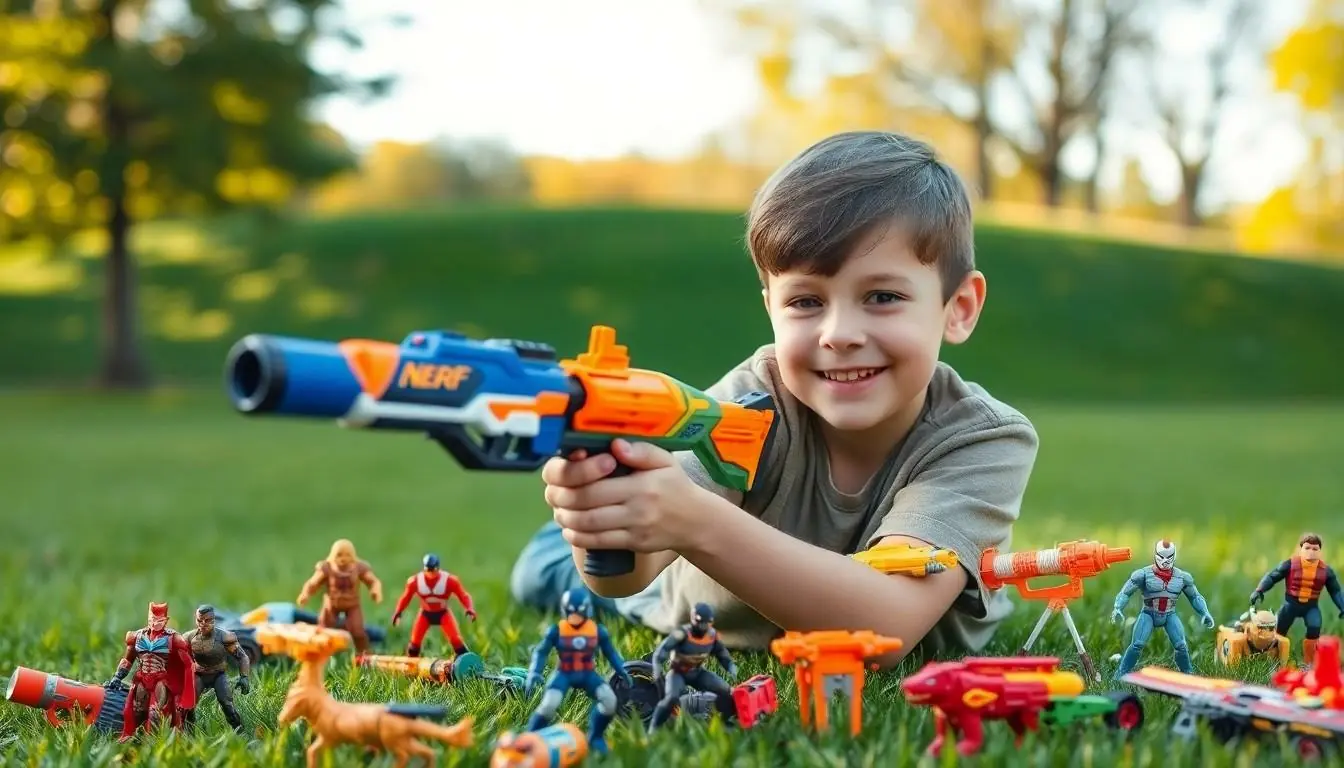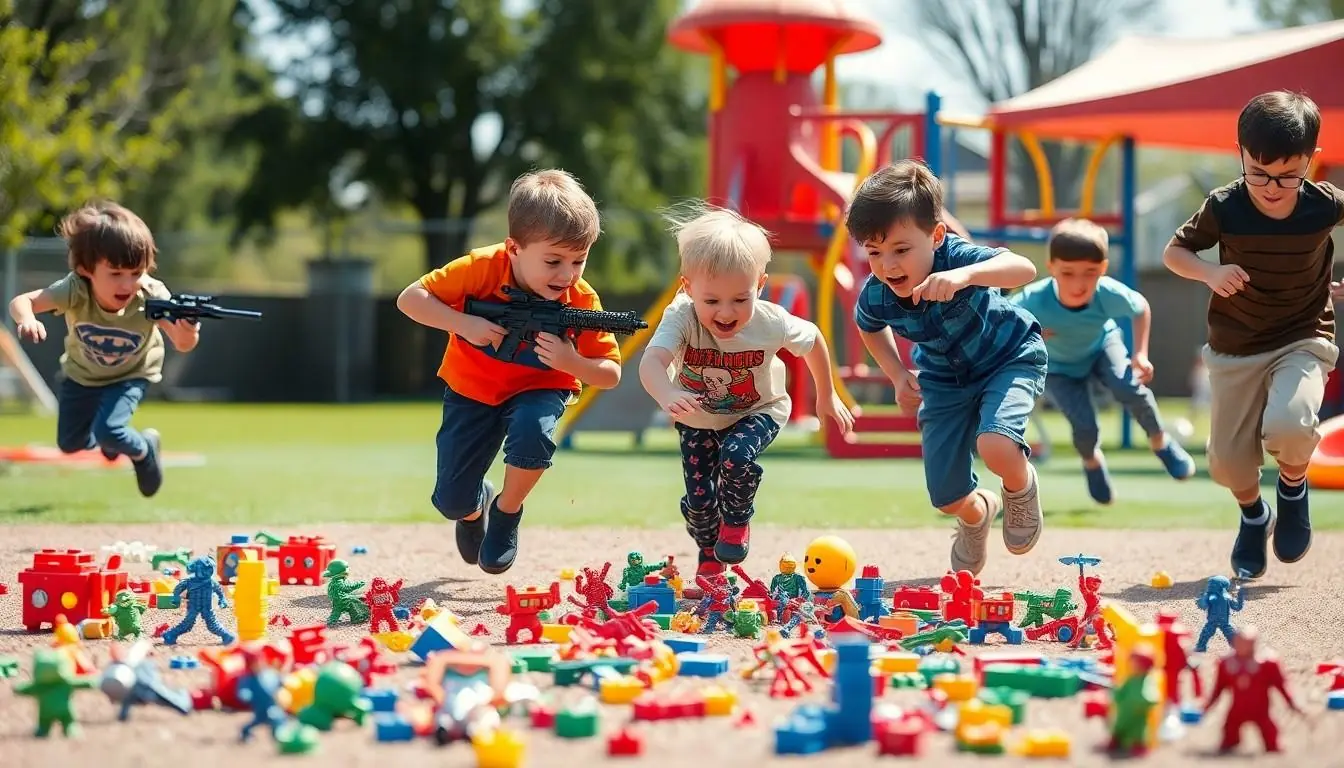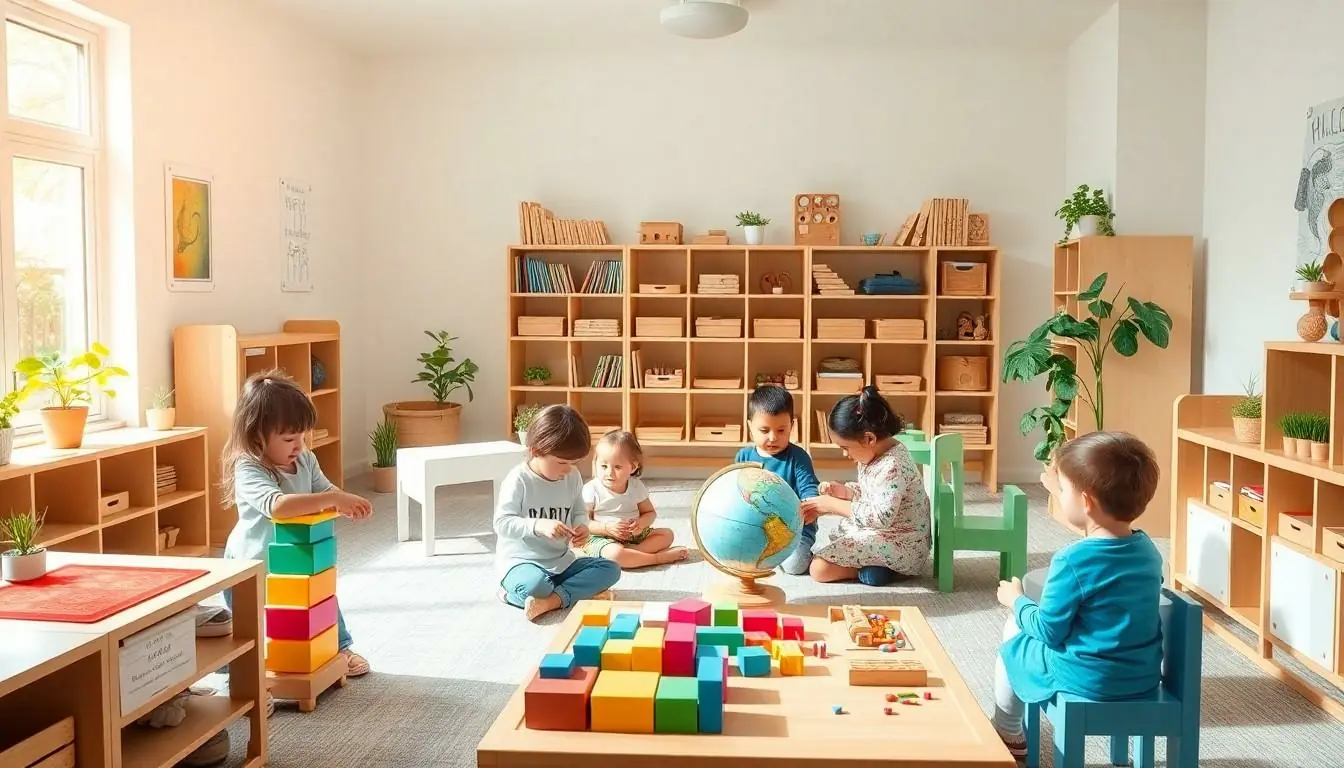Ever wondered why some boys seem to have an endless supply of energy? From climbing trees to wrestling with siblings these “action boys” transform everyday moments into epic adventures. They’re the ones who can’t sit still during dinner and somehow manage to turn a simple walk to school into an imaginary superhero mission.
Growing up with action boys requires a special kind of patience and understanding. These young dynamos aren’t just being difficult – their brains are wired for movement exploration and hands-on learning. While some parents might worry about their boy’s seemingly constant motion research shows that this physical activity plays a crucial role in cognitive development and emotional well-being.
Table of Contents
ToggleWhat Are Action Boys Toys?
Action boys toys encompass a diverse range of play items designed to encourage physical activity, imaginative play, and adventure-based interactions. These toys specifically target young boys’ natural inclination toward dynamic movement and exploratory play patterns.
Popular Toy Lines Through the Decades
The 1960s introduced G.I. Joe action figures, establishing a new category of toys distinct from traditional dolls. He-Man and the Masters of the Universe dominated the 1980s alongside Transformers robots that converted between vehicles and warriors. The 1990s brought Power Rangers merchandise with their signature Megazords and morphing accessories. Hot Wheels cars maintained consistent popularity since 1968, while LEGO action themes like Bionicle and Ninjago emerged in the 2000s. Modern lines include Beyblade spinning tops, Nerf blasters, and action-oriented gaming merchandise.
Key Features and Play Patterns
Action boys toys incorporate specific design elements that enhance active engagement:
- Articulation points enabling dynamic poses and movement
- Projectile launching mechanisms for target practice activities
- Transformation features allowing multiple play configurations
- Interchangeable weapons and armor for customization
- Battle-ready sounds and light effects for immersive play
- Durable materials withstanding rough handling
- Collectible elements encouraging set completion
- Compatible accessories promoting extended playability
- Combat scenarios and strategic battles
- Vehicle-based pursuits and races
- Construction and engineering challenges
- Character role-play and storytelling
- Team-based missions and adventures
Educational Benefits of Action Play
Action-based play activities foster essential developmental skills in boys through dynamic physical engagement with toys objects. These interactive experiences create powerful learning opportunities that complement traditional educational methods.
Building Motor Skills
Active play strengthens both fine motor coordination through manipulating action figures joints positions blocks missiles launching mechanisms. Gross motor development improves as boys engage in running jumping climbing during imaginative battle sequences chase scenarios rescue missions. Research from the American Academy of Pediatrics indicates children who participate in 60+ minutes of active play daily show enhanced:
| Motor Skill Development | Improvement % |
|---|---|
| Hand-eye Coordination | 42% |
| Balance Control | 38% |
| Spatial Awareness | 45% |
| Reaction Time | 36% |
Developing Creativity and Imagination
Action play sparks creative storytelling as boys craft intricate narratives around their toys characters scenarios missions. Studies from child development experts demonstrate imaginative play enhances:
- Problem-solving abilities through creating strategic battle plans
- Emotional intelligence by exploring different character perspectives
- Language skills through narrating action sequences
- Social development via collaborative storytelling with peers
- Abstract thinking through inventing new uses for toy accessories
The Journal of Play Research reports boys engaged in regular action play score 35% higher on creative thinking assessments compared to less physically active peers.
Choosing Age-Appropriate Action Figures
Selecting action figures requires careful consideration of a child’s developmental stage and physical capabilities. Age-appropriate toys promote safe play experiences while supporting motor skill development.
Safety Considerations
Action figures labeled for ages 3+ contain small parts measuring less than 1.75 inches, creating potential choking hazards for younger children. Parents evaluate these key safety factors:
- Testing certification labels (ASTM F963 or EN71) verify compliance with safety standards
- Rounded edges eliminate sharp points that cause injury
- Non-toxic materials meet FDA regulations for child safety
- Secure joints prevent detachment of small components
- Clear age recommendations guide appropriate selection
- Paint coatings pass lead content testing requirements
Durability Factors
- ABS plastic components withstand drops from 4+ feet
- Metal internal joints support 1000+ articulation cycles
- UV-resistant materials prevent degradation in sunlight
- Double-stitched fabric accessories resist tearing
- Paint adhesion meets 24-hour water exposure tests
- Impact-resistant packaging protects figures during transport
- Stress-tested connection points handle 25+ pounds of force
| Durability Test | Industry Standard | Premium Grade |
|---|---|---|
| Drop Test Height | 4 feet | 6 feet |
| Joint Cycles | 1,000 | 5,000 |
| Pull Force | 25 lbs | 40 lbs |
Collectible Value and Investment Potential
Action figures represent significant investment opportunities in the collectibles market, with rare pieces selling for thousands of dollars at specialized auctions. The value appreciation of these toys connects directly to their condition, rarity status, and historical significance.
Vintage Action Boys Toys
Original G.I. Joe action figures from 1964 command prices ranging from $200 to $10,000 depending on their condition and packaging status. Mint-condition examples of the 1978 Star Wars figures fetch up to $45,000 at collector auctions. The most valuable vintage pieces include prototype models, manufacturing errors, and discontinued variants. Authentication certificates, original packaging, and documented provenance increase collectible values by 150% to 300%. Notable collectors focus on complete figure series, rare color variations, and promotional releases from specific production years.
Modern Limited Editions
Contemporary manufacturers create exclusive action figure releases with production runs under 1,000 units. Hot Toys produces licensed movie figures with precise detail at $300 to $800 per piece. NECA’s ultimate editions feature premium articulation points, multiple accessories, and specialized packaging, selling for $100 to $400. Digital tracking systems authenticate modern limited editions through embedded NFC chips, QR codes, or holographic labels. Collector databases record market values, trading histories, and ownership transfers of premium releases. Asian market exclusives command 40% higher prices due to restricted distribution channels.
Digital vs Traditional Action Play
Modern boys navigate between digital platforms and traditional physical toys for action-based entertainment. Each format offers distinct advantages for childhood development through different engagement methods.
Video Games and Apps
Digital platforms create immersive action experiences through interactive storytelling and dynamic gameplay mechanics. Gaming consoles support multiplayer modes where 4-8 players collaborate in virtual missions on titles like Roblox or Minecraft. Mobile apps incorporate motion controls and augmented reality features, transforming physical spaces into digital playgrounds. Studies from the Digital Play Institute show children spend an average of 3 hours daily engaging with digital action content. Popular gaming franchises combine traditional toy properties with digital elements, as seen in Nintendo’s amiibo figures connecting physical collectibles to video game progress.
Physical Toy Innovation
Traditional toy manufacturers integrate technology into physical action figures while maintaining hands-on play value. Modern action figures include NFC chips for digital content unlocking, LED light effects for battle sequences and Bluetooth connectivity for interactive responses. Companies like Hasbro incorporate app-controlled features in Nerf blasters that track accuracy scores and shooting distance. Smart playsets detect figure placement to trigger sound effects and create responsive environments. Research indicates 65% of boys aged 6-12 prefer hybrid toys that combine physical manipulation with digital enhancement. Manufacturing advances enable complex articulation systems with 25+ points of movement in current action figure releases.
Conclusion
Action boys and their dynamic play patterns represent a crucial aspect of childhood development. Their natural inclination toward movement and action-based play serves as a foundation for physical emotional and cognitive growth.
Today’s action figure market brilliantly caters to these needs by offering both traditional and tech-enhanced toys that support active play while fostering creativity. The evolution from simple action figures to sophisticated play systems shows how toy manufacturers understand and adapt to changing play patterns.
Parents who embrace their action boys’ energetic nature while providing appropriate toys and play opportunities create an environment where their children can thrive. Whether through digital platforms physical toys or a combination of both these dynamic play experiences shape tomorrow’s active confident individuals.




